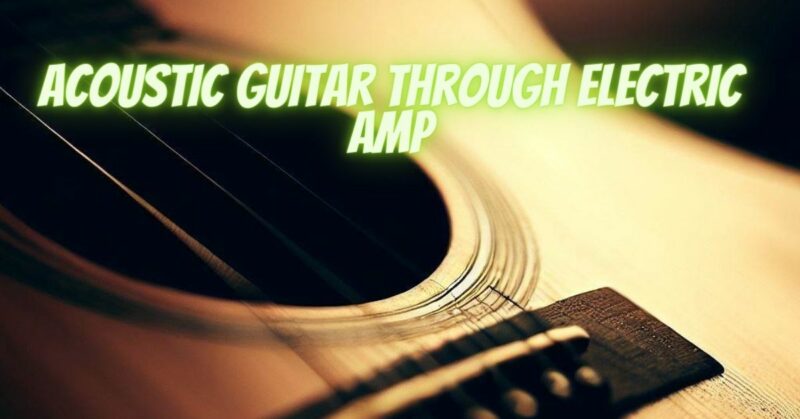The conventional wisdom surrounding the pairing of acoustic guitars with acoustic amplifiers is deeply ingrained in the minds of musicians. However, the exploration of plugging an acoustic guitar into an electric amplifier has become a creative avenue for those seeking to break traditional boundaries. In this extensive exploration, we delve into the considerations, advantages, potential challenges, and the transformative sonic landscape that emerges when the warm resonance of an acoustic guitar meets the electric embrace of an amplifier.
The Marriage of Acoustic and Electric:
1. Unconventional Alliance:
Plugging an acoustic guitar into an electric amplifier is an unconventional alliance that bridges the sonic characteristics of two distinct worlds. The experiment unveils a spectrum of tonal possibilities that extend beyond the acoustic realm, offering a unique blend of warmth, clarity, and electric grit.
2. Enhanced Projection:
The primary advantage of using an electric amplifier with an acoustic guitar lies in enhanced projection and volume. Acoustic guitars, designed for unplugged resonance, may benefit from the amplification to reach larger audiences or cut through the mix in ensemble settings.
Sonic Considerations:
3. Tonewood Influence:
The tonewood of the acoustic guitar plays a significant role in shaping the resulting sound when plugged into an electric amp. The characteristics of woods like spruce, mahogany, or cedar interact dynamically with the amplifier’s circuitry, contributing to a nuanced and distinctive tonal signature.
4. Pickup Systems and Preamps:
The choice of pickup system and preamp in the acoustic guitar becomes crucial when amplifying through an electric amp. Different pickup types, such as piezo, magnetic, or soundboard transducers, can produce varying responses, affecting the way the guitar interacts with the amplifier.
Technical Considerations:
5. Feedback Management:
Acoustic guitars plugged into electric amps may be prone to feedback, especially at higher volumes. Employing feedback suppressors, soundhole covers, or utilizing notch filters on the amplifier’s EQ can help manage and control unwanted feedback.
6. Tonal Shaping:
Electric amplifiers often come equipped with an array of tone-shaping controls, including bass, midrange, treble, and sometimes presence. Experimenting with these controls allows musicians to sculpt the amplified acoustic sound to suit their preferences and the sonic demands of different performance contexts.
Effects Exploration:
7. Expanding Sonic Horizons:
Plugging an acoustic guitar into an electric amp opens the door to a world of effects. Reverb, delay, chorus, and even overdrive can be applied creatively to transform the acoustic sound, adding depth, ambiance, and a touch of electric character.
8. Ambient and Experimental Possibilities:
The combination of acoustic resonance and electric amplification invites musicians into ambient and experimental sonic territories. Whether exploring intricate fingerstyle techniques or pushing the boundaries of sonic textures, the marriage of acoustic and electric elements unlocks a realm of creative possibilities.
Musical Genres and Styles:
9. Versatility Across Genres:
The use of an electric amplifier with an acoustic guitar is not confined to a specific genre. Musicians across various styles, from folk and singer-songwriter to jazz and rock, have embraced this unconventional approach to add a layer of versatility and uniqueness to their sound.
Plugging an acoustic guitar into an electric amplifier transcends the boundaries of traditional amplification, offering musicians a canvas upon which to paint a diverse and expressive sonic tapestry. While challenges such as feedback management and tonal nuances require careful consideration, the rewards are vast, ranging from enhanced projection and volume to the exploration of effects and experimental sonic territories. As musicians continue to seek new ways to articulate their musical vision, the marriage of acoustic warmth with electric amplification stands as a testament to the ever-evolving landscape of sonic innovation and artistic expression.


